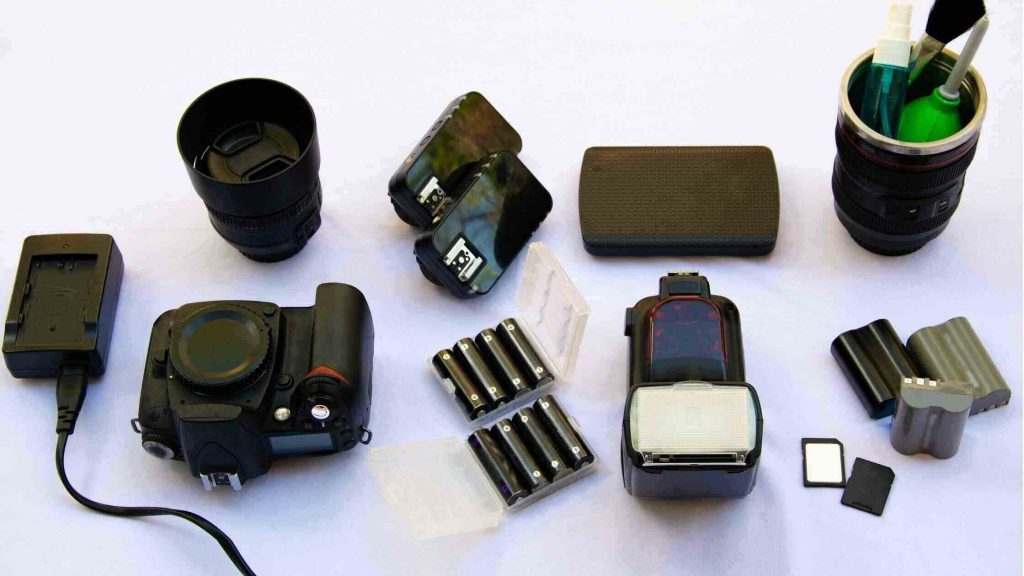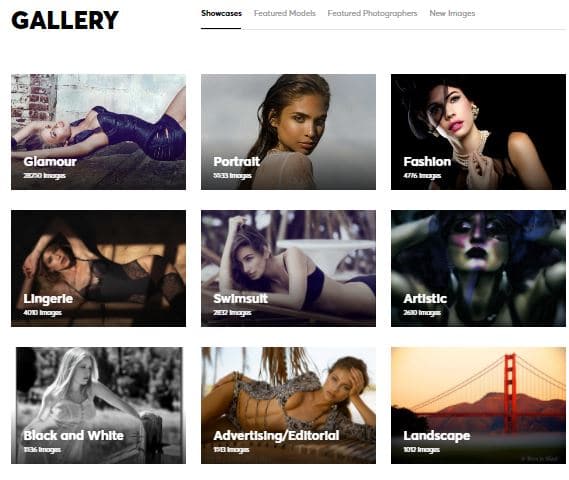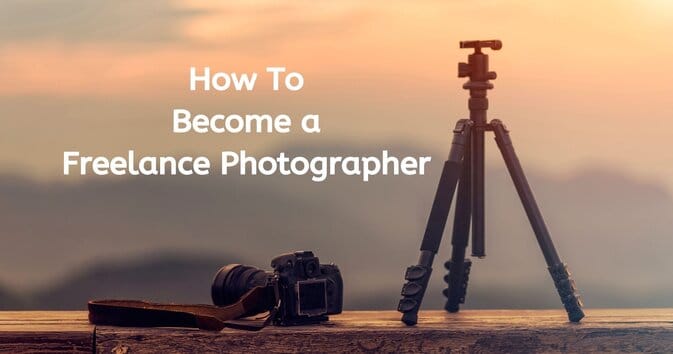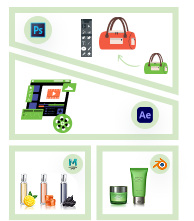The art of photography is akin to this as you pursue the direction your heart says. If you are a photographer and love to work free-style, you probably got your wake-up call to start freelance photography.
But the question is, how? How to become a freelance photographer, make a transition in your photography career, and get the ball rolling in the market? It is a career worthy of your passion and dedication. Therefore, you need a proper plan and grit to implement it.
Don’t worry! You are at the right place. In this article, you will find complete guidance to aid your career as a freelance photographer.
What you’ll learn in this article
- 1 How Do You Start as a Freelance Photographer?
- 2 What is a Freelance Photographer?
- 3 What are the Different Types of Freelance Photographers
- 4 How to Find Clients as a Freelance Photographer
- 5 How to Evaluate Your Photographs
- 6 How to Become a Freelance Photographer With No Experience
- 7 What is the Freelance Photographer Salary
How Do You Start as a Freelance Photographer?
When your problem involves the question ‘how’, it demands a plan. Right?
Frankly speaking, your starting career as a freelance photographer is not going to be as easy as creating a new recipe, serving it, and getting praised. Rather, it is somewhat related to establishing a new business of your own.
And therefore, you have to follow some steps.
Due to professional reasons, we get to communicate with a lot of renowned freelance photographers. Thus, we have a general overview of steps to help you along the way.
Let’s get straight to the point.
1. Arrange the Required Equipment

The first and foremost importance goes to equipment. Without proper equipment, how do you plan to sail your boat?
It doesn’t mean that you have to use an expensive camera, a pricey lens, or something like that. For starters, arrange some basic pieces of equipment to carry out the work on –
- Digital camera
- Computer with internet access
- Phone
2. Explore other Photography Types
In photography, there are a sufficient number of scopes to work on. As you are an aspiring photographer, you are neither bound to take a single type of photo nor compelled to excel in it.
- Take advantage of learning other types of photography as well.
- Explore the sectors as much as you can.
- Soon enough, you will find the area that grabs your attention.
3. Find Your Niche
Okay, that’s a matter of thought. You wouldn’t like a flying start by making whimsical decisions for which you might end up at the starting point again. Then be calculative in the first place. Prioritize your likes, preferences, and attractions. Perhaps you are already interested in some of those photography types, aren’t you?
Now then, try seeking answers to the following questions. These questions will help you truncate your list.
- Which type of photography excites you? It can be one or more. You do not have to limit yourself to a particular type.
- Do you have to undergo immense pressure for anything? The type you choose, does it require you to push yourself to the limit?
- Are you comfortable with the work style? Do you feel forced to work?
- Whatever the risk is you are taking, is that worth your payment?
- How is the market demand?
- What is the future of this type of photography?
Once you find your field of interest, stick to it, hone and polish it, upgrade it. In a nutshell, be a pro!
4. Form a Business Plan
Here goes the vital part of the whole process. As you are starting your career, create a plan beforehand. So that you will be back on track when you lose focus. A lot to do to form a business plan, but not all be written down. But the mandatory parts cannot be omitted, right? Pick a name for your business, not hard to pronounce but easy to remember, and make sense to your company’s service.
Focus on your own signature style, and be unique in taking photos. Always put your finger on the pulse of photography. Allow yourself to become creative and promote your creativity. Then target your type of photography client. Have both short-term and long-term goals to accomplish at a time.
These are not all, your plan must include some fundamental descriptions pertaining to
- Partnership or sole-proprietorship
- The legal structure of the business
- Photography service description
- Strategies to compete in the market
5. Build a Strong Portfolio

An active portfolio can make a whole lot of difference when it comes to showcasing creativity. Your portfolio contains your effort, insight, and skill of your niche creatives all together. You get to show your point of view to the world. Make one if you still don’t have any.
6. Promote Yourself
Now that you have built your portfolio, time to market your work. Be connected on social media like Instagram, Twitter, Pinterest, and Facebook, and share your aesthetic work. Who knows! Any of your photos can go viral and attract a lot of potential clients.
Also Read: Best Way to Share Photos With Clients.
What is a Freelance Photographer?
To put it simply, in freelance photography, photographers become self-employed and perform their job on a contract-based agreement. Sometimes they represent a company, but there is a slight difference; it is not employment.
Freelance photography allows you to have plenty of opportunities. For instance, you can select people you want to work with and reach close to potential customers. Moreover, you get a flexible schedule for working as well.
You get ample scope to amplify your creativity. As a freelance photographer, you get to travel a lot of places and capture the charismatic moments of the earth and have them in your store.
What are the Different Types of Freelance Photographers
Freelance photography is gradually booming. As a result, passionate photographers are ready to jump at this chance. They are showcasing the creativity of their niches with their bells on.
Have you found your niche? No? Okay, no big deal!
Try out the diversity in photography to develop your skills. However, we have listed the top photography types by popular demand. Check this out –
1. E-commerce Photographer
E-commerce photography helps escalate an online business. The products, being the subject of photographs, are only used for advertisements.
Generally, e-commerce product businesses look for several professional services, including clipping path, photo retouching, and ghost mannequin, to make their product more appealing.
E-commerce product photographers capture high-quality images of products that will be sold online. By doing these, they allow potential buyers to take a look and have a complete notion of the product.
2. Commercial Photographer
Nowadays, more or less, all types of business rely on photography. In the era of commerce, the purpose of photography is to exhibit the images intended for marketing.
That is why, to satisfy the eyesight demands of legions of clients all over the world, the necessity for commercial photography has also soared.
Commercial photography ranges from a different sector, such as
- Architecture Photography
- Food Photography
- Aerial Photography
3. Event Photographer
We humans always feel a special attachment to special days, don’t we? So, we tend to keep it in mind for a long time.
That is the sole and most important reason for choosing a career in event photography because there are no limits to events in people’s lives.
That being said, event photographers are receiving more acknowledgment than ever. Some of the categories include: a. Wedding Photography b. Birthday Photography.
4. People Photographer
The worldwide astounding photo ‘Afghan Girl’ by Steve McCurry. An artistic manifestation of people’s photography.
The objective of people photography is to take photos of their faces, smiles, or particular postures, gestures, etc.
There is a saying, ‘if you truly love nature, you will find beauty everywhere.’ If you have found a passion for taking natural photos, stick to it.
There are numerous options for nature-loving photographers to select, for example,
- Underwater Photography
- Landscape Photography
- Panoramic photographer.
Types of photography are not limited to this, though. However, now that you have learned the types, work with the ones that suit your preferences. Soon enough, you will find your niche in photographs.
How to Find Clients as a Freelance Photographer
The art of photography delights you, and you enjoy working free-style. If a handsome amount of profit is added to this combo, how would you feel? As a freelancing photographer, you can find a job in different ways. If you want to apply directly, then you’d better follow this approach –
- Use job sites where job posts are available, such as Fly to Grapher, Scoop Shot, Snappr, Local Grapher, Find a Photographer, and Pretty Instant.
- Contact the companies directly.
When you are applying for a job, it means you are hunting down a job directly in your niche-related fields. As you are not dilly-dallying by looking here and there, there is a greater chance of your getting hired quickly.
You can use an indirect approach to allure your customers through –
- Being active and posting on social media.
- Engaging yourself in stock photography.
A freelance job board is a place worthy of your effort. This sector offers a wide range of jobs in photography daily. Some of the widely known job boards are: 1. Upwork 2. Fiverr 3. Freelancer 4. People Per Hour.
Walk in the direction you feel comfortable with.
Other Sources of Photography Work
The above-named options are not only ways you can find jobs, but there are always alternatives, for example-
- Stock photos: Sites like Shutterstock, iStock allow users to submit their creative photos. You get to share your artwork there. You get paid for every download.
- Digital downloads: Digital download is a vast area of passive income for a freelance photographer where you can put your high-quality photos up for digital downloads.
- On-demand printing: Another effective earning source can be printing. All you have to do is to upload your photo and make some adjustments, and give it the look you intend to offer.
How to Evaluate Your Photographs
You got your first order; hats off to you! You are all set to go. Do your job; show them what you’ve got in your arsenal.
But before delivering, make sure to have your photo edited by a renowned and experienced photo editing company. You know better that such companies are experts in this field, and a slight touch of photography post-production can make the actual difference for your career.
Post-Production in Photography
Post-production photography is called the 2nd phase of photography. This task starts with raw photos. The whole production works are done in this part. So, this part is as important as photography itself. Professional photographers generally do not deliver their photos without editing nowadays. They take various services from photo editing companies, including Clipping Path Services, Photo Retouching Services, and Background Removal Services. So, if you want to set foot on a professional level, make sure your delivered work is conveying the same message.
You can not help but accept the fact that having your photo edited will enhance its standard and outlook. It will appeal more to your customers. And assigning this task to a renowned company will ensure it is done more firmly.
How to Become a Freelance Photographer With No Experience
Some people don’t have prior experience in photography but they intend to become freelance photographers. Is this your case too?
Of course, having experience has an advantage in its advantages. But as that is not your cup of tea, let’s change the cup!
As a novice, don’t go for all the pricey products or jump through hoops. Utilize your time and money wisely.
- Learning comes first. Attend courses or classes that will benefit you.
- Collect pieces of equipment, either rent them or buy 2nd hand gadgets.
- Practice as much as you can, hand one your skills.
- Be updated with trendy photos and gain experience.
- Participate in photography contests and join different photography groups to share new ideas.
- Advertise your work through portfolios, social media, websites, etc.
Freelance Photographer Job Description
Freelance photographers’ jobs depend completely on themselves. They are free to choose with whom they will work, what type of project they will take, at what time they will work, and so on. They get hired in their niche-related fields.
Being a freelance photographer is similar to conducting a sole-proprietorship business. In that case, such a photographer has full autonomy to deal with clients, deadlines, payments, and other tasks all by him/herself.
What is the Freelance Photographer Salary
How do you make your pricing structure?
Consider your material, time, travel, and effort behind the work while pricing your work. Decide on an appropriate charge, neither high nor low. Do yourself a favor. Check what your competitors are charging. It will be much easier for you to decide.
There is no denying the fact that the thirst for high-quality photos is rising, so is the earnings of freelance photographers.
All your hard work will pay off when you make a handsome income. However, the amount varies based on factors like place, niche, skill, business plan, etc.
According to a recent survey, the average annual salary of a freelance photographer is around $35,000 and reaches as high as $79,000. Whereas most of the freelance photographers get a paycheck between $45,500 to $72,000.

